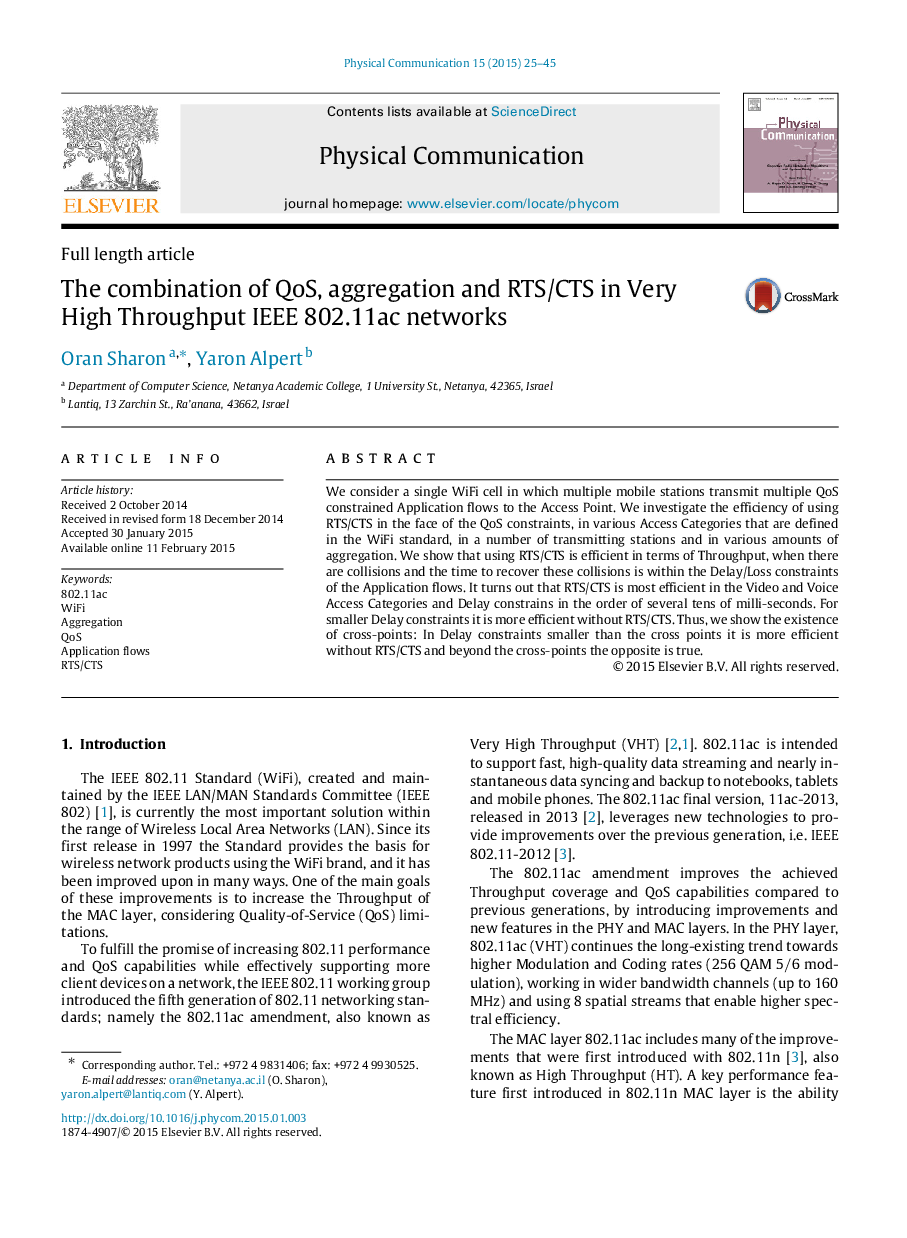| Article ID | Journal | Published Year | Pages | File Type |
|---|---|---|---|---|
| 464208 | Physical Communication | 2015 | 21 Pages |
We consider a single WiFi cell in which multiple mobile stations transmit multiple QoS constrained Application flows to the Access Point. We investigate the efficiency of using RTS/CTS in the face of the QoS constraints, in various Access Categories that are defined in the WiFi standard, in a number of transmitting stations and in various amounts of aggregation. We show that using RTS/CTS is efficient in terms of Throughput, when there are collisions and the time to recover these collisions is within the Delay/Loss constraints of the Application flows. It turns out that RTS/CTS is most efficient in the Video and Voice Access Categories and Delay constrains in the order of several tens of milli-seconds. For smaller Delay constraints it is more efficient without RTS/CTS. Thus, we show the existence of cross-points: In Delay constraints smaller than the cross points it is more efficient without RTS/CTS and beyond the cross-points the opposite is true.
